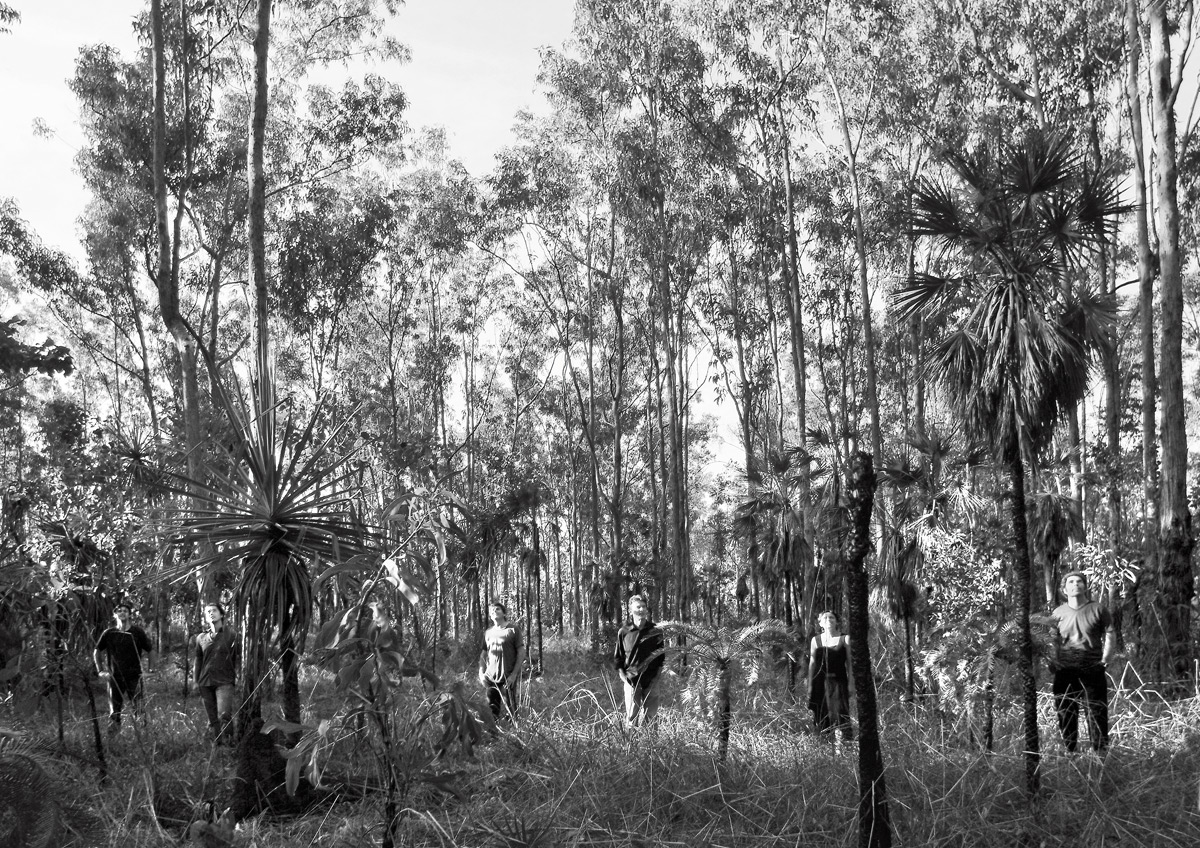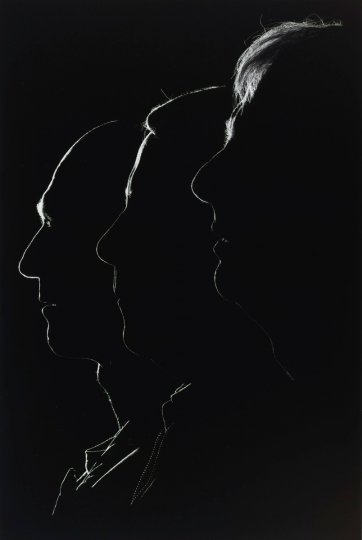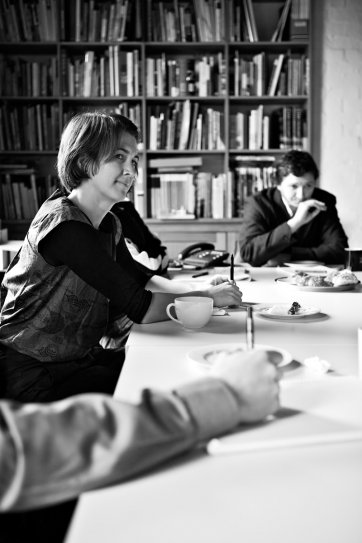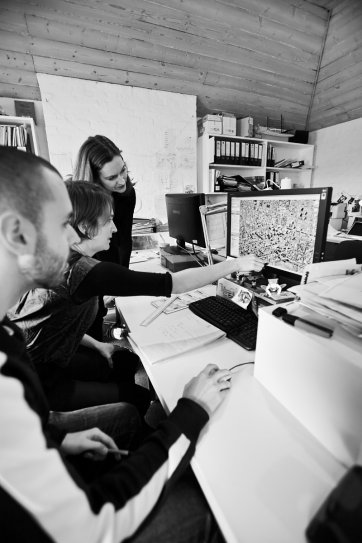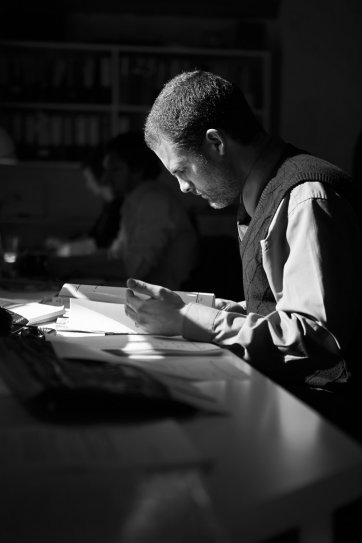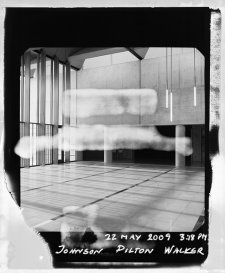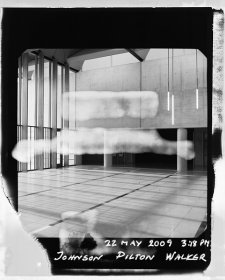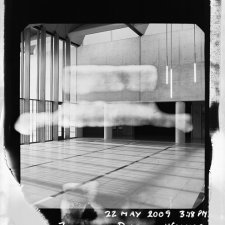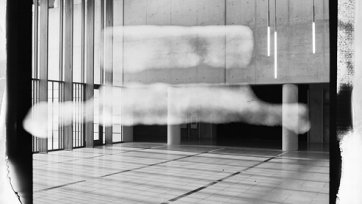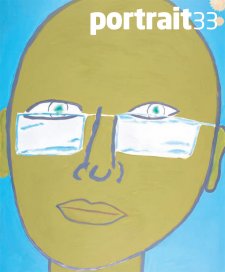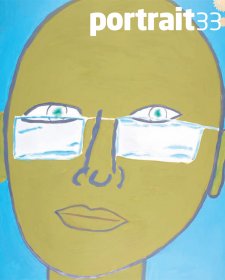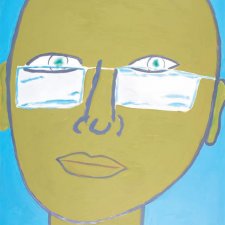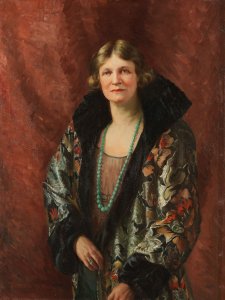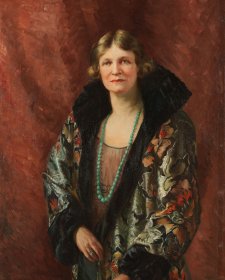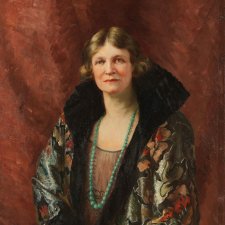Portraits + Architecture is an experiment. The exhibition at the National Portrait Gallery presents the work of seven leading Australian architect teams with commissioned photographic portraits by seven Australian photographers.
The participants have been asked to think about their creative practice in a new way. Portraits + Architecture explores the relationship between creative thinking and identity and incorporates new photographic portraits of creative individuals and groups.
The architect teams are known for their contemporary and highly distinctive work. They have made significant contributions to Australian architecture and design culture. The photographers work across a spectrum of fine art, commercial, and design practice and have produced bold and original photographic portraits for the exhibition. In the twenty-first century the social, cultural and ecological imperatives of architectural practice resonate strongly with artistic, philosophical and sociopolitical ideas and actions.
Many architects, designers, artists and writers are interested in how issues of sustainability and ethics relate to innovation and creativity in technology, aesthetics and functionality. We are increasingly aware of the impact of the built environment on our daily lives, how the design of our dwellings, workplaces and public spaces affects our psychological and physical wellbeing. Portraits + Architecture explores the thinking that informs creative architecture practice rather than the details of specific buildings or architectural projects. The selection of the participating architect teams was based on the original nature of their practice. As a group, they represent a diversity of scale, working from different locations in Australia. The everyday work of each architect team is marked by their unique personality, attitude and aesthetic.
Each architect team was asked to create an installation that reflects their creative philosophy. The exhibition excludes traditional architecture models and plans. The installations can be considered as a self portrait of the architects’ practice. Variously incorporating photographic, video, and three-dimensional elements mounted in the gallery space, the installations are evocative and open-ended.
The experimental exploration of identity through creative process is matched to the more immediate form of photographic portraiture. Each architect team was asked to invite a photographer to create a suite of portrait photographs in response to a defined brief. The portrait photographs are presented in monochromatic black and white and based on the modular unit of the international standard a1 paper size of 594 x 841mm. This common format serves to connect the diverse installation projects throughout the exhibition while allowing each photographer to create an individual interpretation of their subjects.
The exhibition appears like a studio environment. Each installation and suite of portrait photographs occupies a distinct zone, while relationships between the installations are present through overlapping sightlines. Several of the installations invite the interaction of the visitor. There is a spirit of experimentation and playfulness as a generator of creativity, introduced in the exhibition entry zone, where visitors are invited to participate in interactive activities. The installation concepts were developed over time, and a number of them anticipate a degree of improvisation and responsiveness to their presentation in the gallery space.
CO-AP (Collaborative Architecture Practice) is based in Sydney. The team of three directors Tina Engelen, Will Fung and Charles Markell invited photographer Ross Honeysett to create their portrait. co-ap endeavour to realise unique outcomes for each project, achieved through a strong and reliable collaborative process that is initiated at an early stage, with emphasis on research and development, program, context and sustainability. For this exhibition the team invites the visitor to experience their three-dimensional domain assembled using a mass-produced product. The installation is echoed in their paper cup construction activity that encourages exhibition visitors to explore assemblages using small modular units. Photographer Ross Honeysett has produced a large composition incorporating a1 modules. Honeysett’s dynamic portrait of co-ap captures the team’s vibrant enthusiasm, energy and optimism to imagine fresh solutions for a densely concentrated future. His image is pure and unembellished to instantly reveal this idea.
Denton Corker Marshall is based in Melbourne with offices in London and Jakarta. One of the world’s leading design practices, Denton Corker Marshall has developed a distinctive architectural language that explores the fusing of art, architecture and tectonics. The team’s installation for the exhibition reveals the fluid nature of the creative thinking process.
Founding directors John Denton, Bill Corker and Barrie Marshall have invited renowned photographer of architecture John Gollings to create their portrait. Gollings’s professional practice incorporates collaborations in graphic design and three dimensional virtual modelling. His cosmos of portrait images of Denton Corker Marshall includes abstracted images based on backlit profiles of the team. Gollings says this reflects the ‘sparse and elegant’ nature of their architecture and its ‘play on repetition, undulation and convergence’.
Johnson Pilton Walker designed the National Portrait Gallery building. Sydney-based directors Richard Johnson, Adrian Pilton, Jeff Walker, Graeme Dix, Kiong Lee and Paul van Ratingen invited photographer Ingvar Kenne to create their portrait photographs. The design of the Gallery is defined by human scale and responds to the natural environment in which the building is sited, particularly Canberra’s unique natural light. For the exhibition, the team have created an installation centred on the actual table used to design the building from competition to completion. Photographer Ingvar Kenne produced a suite of portrait photographs that depict each member of the team in the entry hall of Gallery. ‘We wanted to convey the transformation of a space during a day and night and incorporate the portrait of each architect’, says Kenne. ‘Each one of them was asked to turn up in the clothes they wanted to wear and where they appeared in the frame was dictated by the moment rather than being planned. We were excited having the opportunity to photograph them in the space they designed, knowing that these portraits would end up hanging inside the same space during the exhibition.’ These are the first commissioned portraits created in the National Portrait Gallery.
For Kerstin Thompson, Principal of Melbourne-based Kerstin Thompson Architects, architecture represents and enriches the relationship between the building, the site and the client. It is necessarily a portrait of the people and place for which it has been created. In this installation Thompson has selected a handful of projects by Kerstin Thompson Architects and, through her own photographs, documented these to reveal something about the way in which they are used and enjoyed. The naturalistic approach evokes the warmth of the lived experience within sensitively designed buildings and landscapes and offers a portrait of place. The portraits of Kerstin Thompson Architects, taken by Luis Ferreiro within the office and on site, informally capture some of the people, spaces and processes through which architecture is made.
Sean Godsell, director of Sean Godsell Architects based in Melbourne, is known internationally for his distinctive residential architecture including single family dwellings like St Andrew’s Beach House and Glenburn House to ‘compassionate infrastructure’ projects such as the Park Bench House and Bus Shelter House that provide refuge for displaced persons in the urban environment. His Future Shack concept, a mass produced relocatable emergency housing unit made from recycled shipping containers. Godsell has created a wall-work for the exhibition. Photographer Earl Carter says his portrait of Sean Godsell ‘uses the two elements common to all of his buildings – the use of strong minimalist space and surfaces, and his intelligent use of light and its interplay within three dimensions’. Carter’s image has not been manipulated, and is ‘a homage to the traditional photographic portrait, giving the photograph a sculptural integrity for which the architect’s buildings have become renowned’.
TERROIR directors Gerard Reinmuth (Sydney), Scott Balmforth (Hobart) and Richard Blythe (Melbourne) believe that the practice of architecture is the production of knowledge. The team’s architectural projects include the ‘discussions, lectures, research, exhibitions and explorations that work through the issues relevant to each project’. The team’s philosophy is informed by the imperative of architectural practice to ‘engage with complex interconnected and overlapping systems’. TERROIR have collaborated with artist John Vella to create a screenbased installation for the exhibition. The 16 minute three-screen projected loop was edited and post produced by Mark Cornelius at Clockwork Beehive. In his portrait of TERROIR, photographer Brett Boardman says he wanted to emphasise ‘the role of landscape and place in their work’ and ‘the disparate landscapes that the three directors operate within’. Boardman has chosen to ‘isolate them from this natural setting and unify them by providing a blank “virtual” and common background to each’. The disparate landscapes are connected by the team’s two offices. Boardman says ‘the apparatus of the photograph – the stands, clamps and sandbags – remain as part of the image showing the photographic working nature of the portrait’.
The studios of Troppo Architects are located away from Australia’s major urban centres. Their work is characterised by its responsiveness to the local environment and climate, its dynamism of ‘adjustable skins’, and its connectivity of interior and exterior spaces. The team states that they aim to develop ‘a non-constant architecture that responds to the morning, the evening, the season, the heat, the cold, the sun, the rain, the moment that will never pass again’. The team’s installation reflects the responsiveness to place and moment that informs their work. The directors Greg McNamara and Lena Yali (Darwin), Zammi Rohan (Townsville), Phil Harris and Cary Duffield (Adelaide, Byron Bay) and Adrian Welke (Perth), ‘with lots of help from our friends’, have invited photographer and designer David Lancashire to create a set of portraits that situate the team in five diverse, immersive, and highly-textured natural environments. ‘In these portraits I wanted to show the strong connection Troppo Architects have with a sense of place’ says Lancashire. ‘The way their Architecture responds to and sits at one with country, is inseparable from their understanding of the ancient rhythms and culture of this great Continent.’
Portraits + Architecture is accompanied by a dedicated website at portrait.gov.au that includes documentation of the exhibition installations, the portrait photographs, links to the participants’ websites, and informal discussions with the architects in response to questions about their inspirations, creative thinking processes, and identity.
